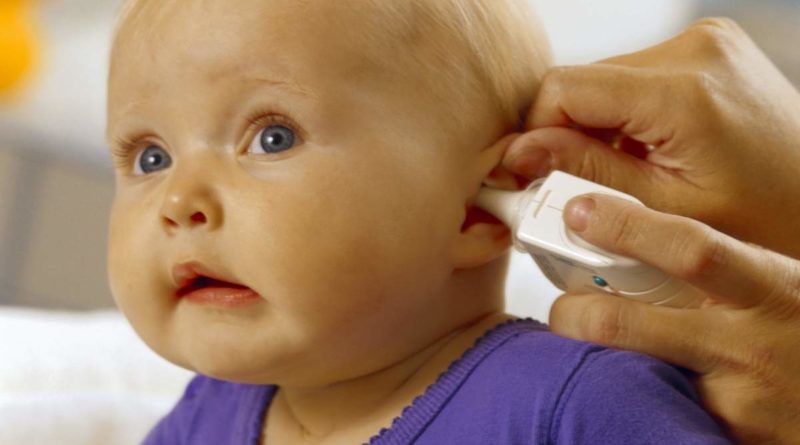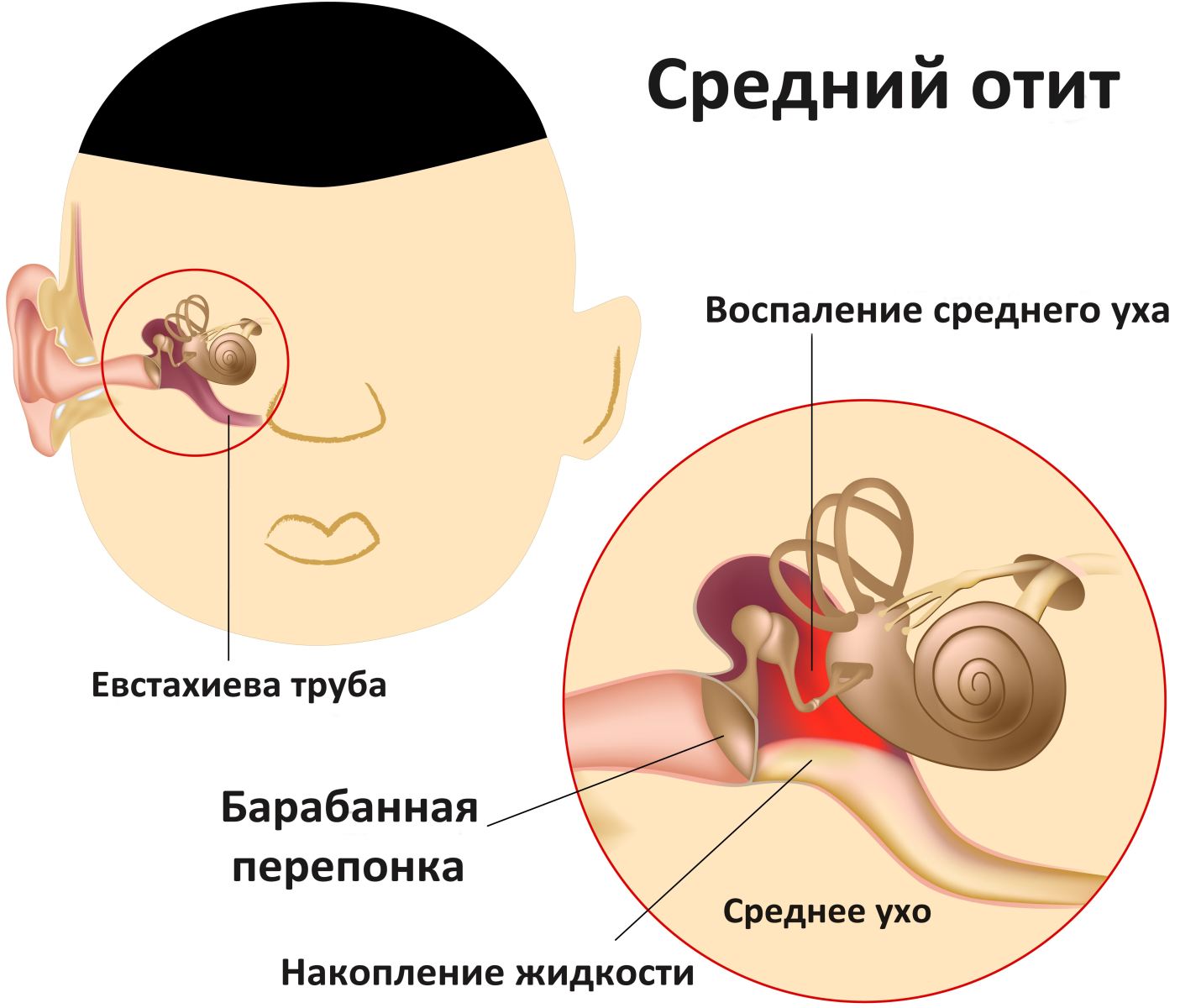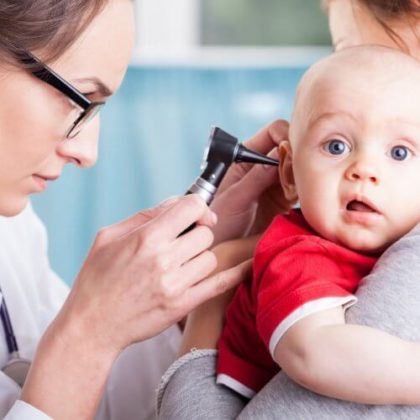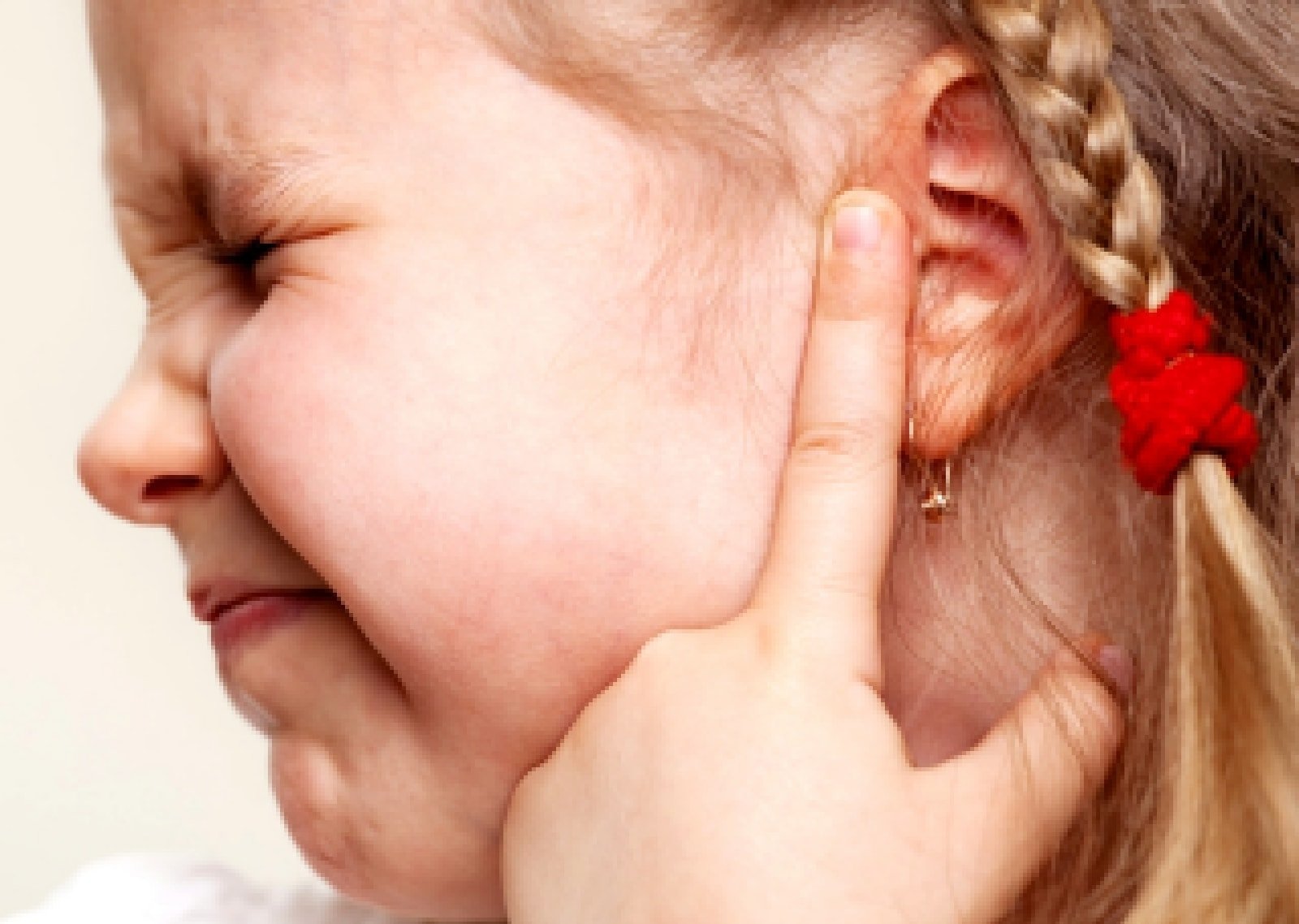9 signs of otitis media, due to which you can suspect the disease in the early stages
Almost every mother of a baby under five years of age is familiar with such an unpleasant disease as acute otitis media. It is important to identify and properly help the child before he is examined by a specialist. After all, inflammation of the ear is not only unpleasant pain. With the wrong actions and delayed treatment, the crumbs can develop life-threatening complications. As a result of the disease, the hearing of the baby can be significantly reduced, which will negatively affect its further development. Moms and dads should know what measures to take so that this disease never, or visits the child as rarely as possible.
Pediatrician

Inflammation of different parts of the ear is called otitis media. It can be classified according to several criteria.
If the baby fell ill with otitis media for the first time in his life or did not suffer from it for seven months or more, then otitis media will be acute. If a child has been sick with it more than three times in the past six months, then this is recurrent otitis media.


Ear inflammation almost always occurs against the background of acute or chronic inflammatory processes in the nasopharynx. Most often this is the result of acute respiratory infections - SARS.
According to its structure, the ear is divided into several parts. Inflammation can occur in any of them.
Otitis occurs:
- external, when the ear canal suffers;
- otitis media, when structures behind the eardrum are involved in the process;
- otitis media or labyrinthitis. The components of the organ of hearing located inside the temporal bone suffer.
If one ear hurts, otitis is called unilateral, and if two - bilateral.
If there is no discharge from the ear during otitis media, it is called catarrhal. If they are present, then exudative.
The structure of the ear of a child and an adult is different. The presence of such structural features determines the high incidence of otitis in children.
![]() The ear canal of a young child consists of two-thirds of cartilaginous tissue on the outside and only inside is represented by bone tissue. In older children, only a third of the outer part of the ear canal is formed by cartilage tissue. Throughout its length it is lined with epithelial skin cells. In those places where the canal is formed by bone tissue, it is covered with a thin skin.
The ear canal of a young child consists of two-thirds of cartilaginous tissue on the outside and only inside is represented by bone tissue. In older children, only a third of the outer part of the ear canal is formed by cartilage tissue. Throughout its length it is lined with epithelial skin cells. In those places where the canal is formed by bone tissue, it is covered with a thin skin.
But the cartilaginous area is covered with full-fledged skin with numerous follicles, sebaceous and ceruminous glands. The sebaceous glands secrete a viscous secret, and the ceruminous glands secrete a liquid, pigmented, brown color. Both secrets mix with exfoliating skin cells. As a result, ear wax is formed, which performs a protective and water-repellent function.
The microflora of the outer ear is represented by corynobacteria, micrococci, staphylococci, streptococci, enterobacter, klebsiella and other bacteria. All of them can be attributed to representatives of conditionally pathogenic microflora. Under normal conditions, they coexist peacefully with a person, but under certain circumstances they can cause the development of the disease.
In babies, very often the cause of inflammation of the external auditory canal becomes excessive moisture, when the skin loses its protective function and bacteria begin to actively multiply. It can occur due to the ingress of a large amount of water when washing a child or when swimming in a pool, river. Therefore, otitis externa is also called "bather's ear".
The eardrum separates the outer ear from the middle ear. The space behind it is called the tympanic cavity. It is connected to the nasopharynx by a thin canal - the auditory or Eustachian tube. With its help, optimal pressure is maintained in the middle ear cavity, air exchange occurs and mucus is evacuated. In infants and toddlers up to three to five years of age, the eardrum is thick and the Eustachian tube is shorter and horizontal compared to older children.
 In the tympanic cavity there are auditory ossicles, which, due to their similarity with the objects of the same name, are called the hammer, anvil and stirrup. They convert the noise coming from outside.
In the tympanic cavity there are auditory ossicles, which, due to their similarity with the objects of the same name, are called the hammer, anvil and stirrup. They convert the noise coming from outside.
In the nasopharynx, next to the Eustachian tube, there is lymphoid tissue - the nasopharyngeal tonsils. Their growth (hypertrophy) can be physiological in children aged 1-3 years, or pathological in frequently ill children. Hypertrophic lymphoid tissue compresses the Eustachian tube, disrupting ventilation and changing air pressure in the middle ear. For this reason, it becomes inflamed.
When a child suffers any respiratory infection, he almost always develops acute nasopharyngitis, an inflammatory process in the nasopharynx. The mucous membrane of the Eustachian tubes is also involved in inflammation. In this case, their clearance will narrow and the ventilation function will be impaired. The pressure in the tympanic cavity changes. Due to its small size and location, mucus through the auditory tubes from the nasopharynx easily penetrates into the middle ear cavity. These factors cause the development of acute otitis media.
If an infant burps frequently and profusely, the contents of the oropharynx easily enter the nose and through the Eustachian tube into the tympanic cavity. This factor also predisposes to the development of inflammation of the middle ear.
If pus accumulates in the middle ear cavity, it will put pressure on the eardrum until it ruptures. Then the contents of the tympanic cavity will flow out of the ear canal. Perforation of the membrane due to its considerable thickness occurs in the later stages of the disease. And purulent contents are more likely to fall into the inner ear.
Some babies are born with an abnormal development of the hard palate called cleft palate or cleft palate. In such babies, otitis media will recur due to the malfunction of the auditory tubes.
The structures of the inner ear are located in the temporal bone and are connected to the middle ear with the help of numerous holes - windows. The inner ear includes the semicircular canal system and the cochlea. All of them are responsible for sound transmission. The cochlea contains the organ of balance, the organ of Corti.
Otitis media or labyrinthitis is very rare. It develops if the infection penetrates into the cavity of the temporal bone from the middle ear. Labyrinthitis may also occur as a result of complications of bacterial meningitis.
Symptoms of otitis media
- Ear ache. Will accompany any inflammation of the ear. Babies and babies will be very restless. The equivalent of an earache would be constant plaintive crying, restlessness when sucking, or not eating at all. The kid can restlessly turn his head, pull the sore ear. Older children complain of a feeling of fullness in the ear, discomfort, pain of a aching and pulling nature. With inflammation in the inner ear, older children characterize the pain as "deep". Soreness subsides somewhat if the child supports the affected ear with his hand.
- Deterioration of well-being. Most often, this symptom is expressed in infants. The kid becomes lethargic, whiny, refuses to play and eat. He does not find a place for himself, constantly asks for hands, but this does not bring relief. Vomiting appears, which is not associated with eating and does not bring relief to the child. The deterioration of the condition is associated with intoxication as a result of the development of an infectious process.
- Fever or subfebrile temperature. In infants and infants, the temperature rises with any inflammatory process in the ear. Older children will respond with fever when purulent inflammation develops in the middle or inner ear.
- Itching in ear canal. This symptom often accompanies otitis externa. Babies can't scratch. They will restlessly turn their heads, pull their ears. Itching can interfere with your child's sleep.
- Discharge from ears. Occur in otitis externa and otitis media. In the first case, a clear liquid is released from the ears. With inflammation of the middle ear - a viscous secret of a purulent nature, often a specific smell comes from the ear. Since in babies pus accumulates in the tympanic cavity and does not break out for a long time due to the large thickness of the membrane, general symptoms will prevail - pain and fever. When it ruptures and pus flows out, pain relief occurs.
- Hearing loss. Occurs with any localization of otitis media. Otitis externa is accompanied by swelling of the ear canal. With inflammation of the middle and inner ear, the function of the auditory ossicles, cochlea, and semicircular canals is impaired. As a result, sound transmission and sound perception deteriorate. Babies begin to respond poorly to adult speech and musical toys, and older children themselves complain of hearing loss, or begin to ask their parents again, increase the sound volume when watching TV.
- Dizziness, imbalance. These symptoms indicate the development of internal otitis when the organ of balance is affected. You may notice an unsteady gait and falls when the child walks. He himself complains of unusual sensations when changing postures, walking, lying down.
- Noise in ears. This symptom accompanies inflammation of any part of the ear.
- Lymphadenitis. This is an inflammation of the lymph nodes located along the outflow of lymph from the ear. Inflammation in such cases parotid, cervical, occipital lymph nodes are susceptible. Parents may notice their increase in any localization of inflammation in the ear. Often the child himself complains of pain in the neck or neck.
You can try to determine the presence of ear inflammation in a child by pressing on the tragus. This cartilaginous formation is located opposite the external auditory opening. In case of inflammation of the outer or middle ear, the child will complain of pain when pressed. The baby will worry and pull his hand away from the sore ear. This feature is not reliable. If otitis media is suspected in the crumbs, a mandatory examination by a doctor is necessary.
Complications of acute otitis media

They will occur if purulent inflammation of the middle ear or labyrinthitis is not treated. But complications can also occur with inflammation of the auditory canal. Most of them consist in the spread of infection to neighboring and nearby structures, chronic inflammation, or both.
The following conditions can be attributed to complications of otitis media.
- Infectious eczematous dermatitis. This is an infection of the skin covering the external auditory canal. It occurs if the skin becomes infected with purulent discharge from the tympanic cavity.
- Chronic suppurative inflammation middle ear structures.
- Acute mastoiditis. It is characterized by inflammation of the cells of the mastoid process of the temporal bone. In the future, destruction (purulent fusion) of the bone structure and damage to the cranial nerves, orbit, and neck muscles on the side of inflammation may occur.
- Paralysis of the facial nerve(Bell's palsy). This nerve runs between the ear and the mastoid but is rarely affected. As a result of damage to the facial nerve, the child will experience weakness of facial muscles, skewed mouth, incomplete closure of the eyelids on the side of the lesion, increased salivation, and changes in diction.
- cholesteatoma. This is a cystic formation in the middle ear or in the temporal bone cavities, which contains dead epithelial cells.
- Intracranial complications: meningitis, encephalitis, brain abscess.
- Hearing loss. Occurs due to sclerosis of the tympanic membrane, its strong retraction due to atelectasis, perforation, impaired connection of the auditory ossicles.
How to help a child?
If acute otitis media is suspected in a baby, an examination by an otorhinolaryngologist or pediatrician is necessary. They will examine the ear with a special device - an otoscope and establish an accurate diagnosis. But before a visit to the doctor, mom and dad can alleviate the child's condition on their own.

If the baby has a high temperature, he complains or there is a suspicion of pain, you need to anesthetize. In this case, paracetamol preparations are used: Panadol, Kalpol, Cefekon; or ibuprofen: Nurofen, Ibufen, Maxicold. A single dose of paracetamol is 15 mg per kilogram of the child's body weight, and ibuprofen is 10 mg per kilogram.
For pain relief and lowering the temperature in babies, only the above drugs are used. Aspirin, analgin, nimesulide (Nise) are not used to treat children. Their use can cause the development of life-threatening complications for the child. The analgesic and anti-inflammatory effect is more pronounced in ibuprofen, therefore, in acute otitis media, it is better to give the baby this drug.
To reduce swelling of the mucous membrane of the Eustachian tube, any age-appropriate vasoconstrictor drops can be dripped into the child's nose. It is best if these are xylometazoline or oxymetazoline preparations (Tizin, Xymelin, Snoop).
Vasoconstrictor drops in babies are used no more than three times a day to avoid side effects of drugs.
If the sore ear is dry to the touch, there is no discharge, you can use ear drops with an anesthetic, for example, Otipax. This measure will relieve pain and improve the condition of the baby.
If fluid is released from the ear, drops should be instilled strictly with the permission of the doctor. A discharge can be a sign of perforation of the eardrum, and many drops contain components that are toxic to the structures of the tympanic cavity and can only do harm.
A dry pressure bandage can be applied to the affected ear. In some cases, this measure will also relieve pain. Alcohol compresses do not need to be done. It is not necessary to warm the sore ear before examining a doctor.
The question of prescribing antibacterial drugs for oral administration is decided only by the doctor. There is no need to self-administer antibiotics.
What should be done to prevent acute otitis media?
Acute otitis often occurs as a complication of respiratory viral infections. In the prevention of this disease, an important role is played by the hardening of the baby and the restriction of contact with strangers during seasonal rises in the incidence. In the family during such periods, you need to follow the rules of personal hygiene: wash your hands after coming home, carry out wet cleaning and airing daily. Avoid passive smoking.
Breastfeeding in the first six months of life is important for infants. Babies suffering from regurgitation should be fed in a semi-vertical position so that food does not flow into the nasopharynx during feeding. After feeding, the baby should stay upright for up to 40 minutes.
Of particular importance is vaccination against hemophilic and pneumococcal infections from an early age, since it is hemophilic bacillus and pneumococci that most often cause the development of acute purulent otitis media in children under three years of age.
If the child is still ill with a respiratory infection, he has a runny nose, then you need to prevent thickening of the mucus in the nasal passages. Otherwise, blockage of the auditory tubes will occur and otitis media will develop. At such a moment, the baby should drink a lot - up to 1.5 - 2 liters of fluid per day, depending on age. The room temperature should be maintained within 18 - 22 ºС, and air humidity - 50 - 60%. So that the mucus does not dry out and is quickly evacuated, you can instill a few drops of any isotonic solution of table salt into the nasal passages every hour and a half.
Isotonic saline solution can be prepared by dissolving a teaspoon of table salt in a liter of boiled water. You can buy a ready-made saline solution at a pharmacy.
The baby needs to carefully remove excess mucus from the nasal passages using an aspirator. And an older child can already be taught to blow his nose correctly. The nasal passages should be cleaned alternately, the mucus should not be pushed out intensively, in short intervals.
You should not frequently rinse the nose of a baby or force an older child to blow his nose intensively. Due to the structure of the auditory tubes, mucus with pathogens can easily penetrate into the middle ear cavity.
During water procedures in babies prone to illness, ears should be protected from moisture. It is necessary to do this when swimming in ponds and pools.
With proper and timely treatment, acute otitis media resolves quite quickly and almost never leads to the development of complications and hearing loss. And when the eardrum ruptures, a scar forms quite quickly, which does not affect the quality of hearing.
2 ratings, average: 5,00
out of 5)
